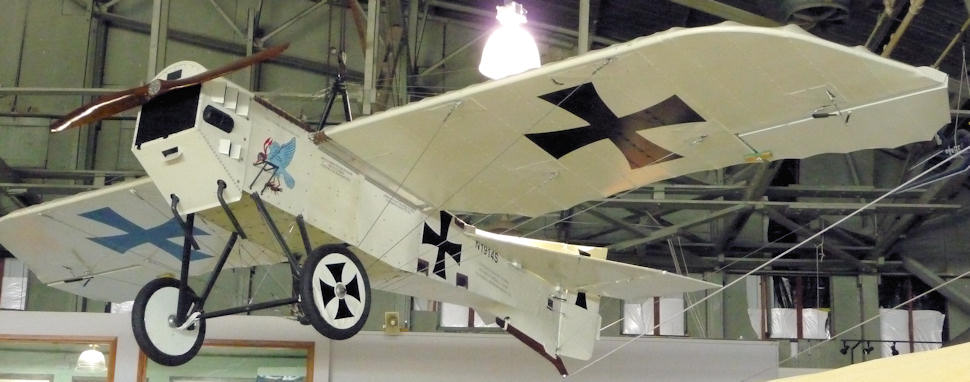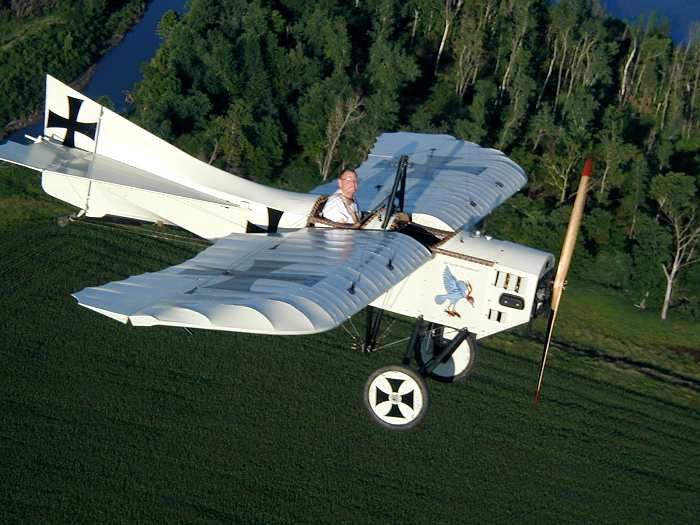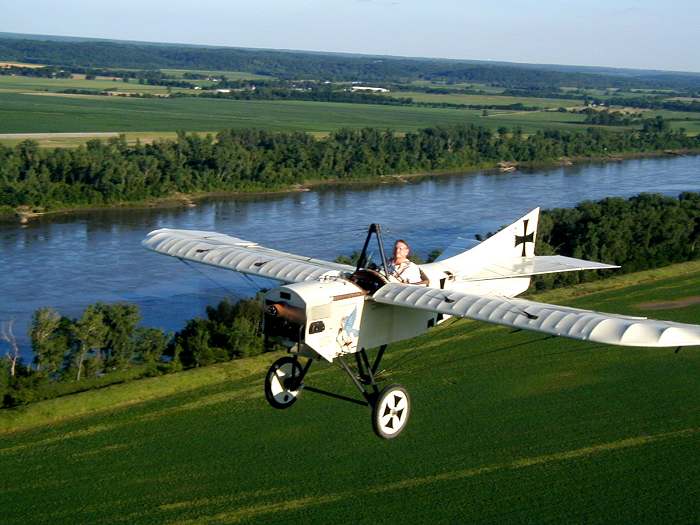The Taube (dove) was developed by Igo Etrich from Austria in 1909 with the first flight in 1910. It was initially called the Etrich Taube. The design was licensed for serial production by Lohner in Austria and Rumpler in Germany where it was called the Etrich-Rumpler-Taube. However Rumpler soon changed the name to Rumpler-Taube and stopped paying royalties to Etrich. Etrich subsequently abandoned his patent. The first hostile engagement for the plane was an Italian Taube in 1911 in Libya, with the pilots using pistols and dropping 4-lb bombs. It was also used in bombing runs in the Balkans the same year.The Taube's wing design was originally based on the zanonia tree seed pod, which drifts through the air for great distances.
The plane was very popular and was used by the air forces of Germany, Italy and Austria-Hungary. When the wings were painted with clear nitrate dope over linen, the plane became virtually transparent and impossible to see against a clear sunny sky. This made the Taube the "Stealth Bomber" of its time, as the combatants on the ground below could hear the aircraft but not see it. Awkward and fragile as it seems, the Rumpler-Taube was a very graceful design for the day. It was so stable that the pilots would climb out of the cockpit and lie on the wing, waving to people on the ground, while the plane made great sweeping circles around the airfield.
At the outbreak of hostilities Taubes comprised about half of Germany's 246 aircraft strength. They were put into use immediately and saw considerable duty in many roles. Observers flying in the rear seat of the aircraft discovered the large Russian advance at the Battle of Tannenberg.
The Taube was the first plane to bomb Paris on August 30, 1914. The bird-like Rumpler-Taube sailed over Paris for nearly an hour with a load of 3 small 6-lb bombs and 3 message containers. When the bombs were finally dropped, surprised Parisians thought that a gas explosion had struck the heart of the city. Two Germans in the cockpit - the pilot and an observer - had invaded Paris and with each bomb dropped came a weighted message, attached to a 7-foot banner, in German colors. The message - "The German Army stands before the gates of Paris. You have no choice but to surrender." One aircraft became notorious as the "Five-O'clock-Taube", an irritatingly regular visitor over the skies above Paris, dropping its 6-lb bombs, leaflets and regular demands for the city's immediate surrender. City dwellers would sit in the outdoor restaurants and bars, making bets as to where the 6-lb bombs would fall.
It was also the first plane to bomb London as well as acting as flying escorts for the Zeppelin raids over England. Over 54 different variants were made and it flew throughout the whole war.
The lack of a rudder and the wing warping (rudder) design made this plane difficult and slow to turn. Subsequently the plane became an easy target for the faster and more mobile allied warplanes. Therefore, six months into the war, the Taube was removed from active duty over the front lines and used instead to train new pilots or as surveillance aircraft.
This 52% scale replica was built by Dick and Sharon Starks of Parkville, MO over a 7-year period. It flew in numerous air shows as part of The Dawn Patrol of Kansas City, MO, during 2004 and 2005 (see photos below) before being donated to the Combat Air Museum in 2006. It flew under the registration N1914S
GENERAL TECHNICAL
NOTES:
|
Original Rumpler Taube Full Scale Model |
Manufacturer:
|
Rumpler, Germany |
Basic Role:
|
Scout, fighter, bomber |
Crew:
|
Two |
Engines:
|
1 × Mercedes Typ E4F[9] 4-cyl. water-cooled piston engine, 64 kW (86 hp) |
Maximum
speed:
|
62 mph (100 kph) |
Length:
|
32 ft 6 in (9.9 m) |
Height:
|
10 ft 6 in (3.2 m) |
Wing area:
|
350 sq ft (32.5 m2) |
Weight (empty):
|
1,433 lb (650 kg) |
Weight (gross):
|
1,874 lb (850 kg) |
Armament:
|
Rifles, pistols and hand dropped bombs |
 |
|




